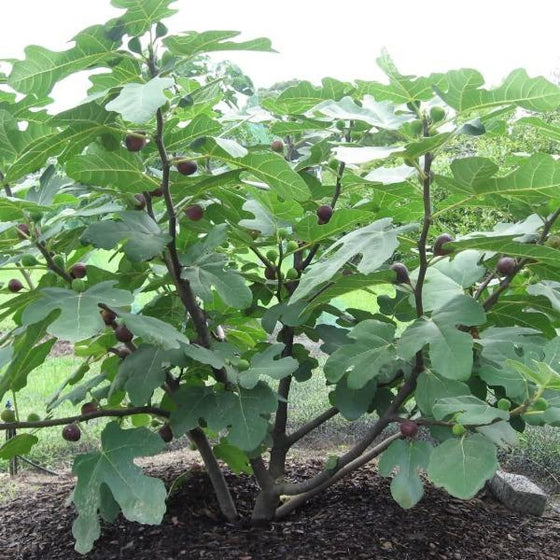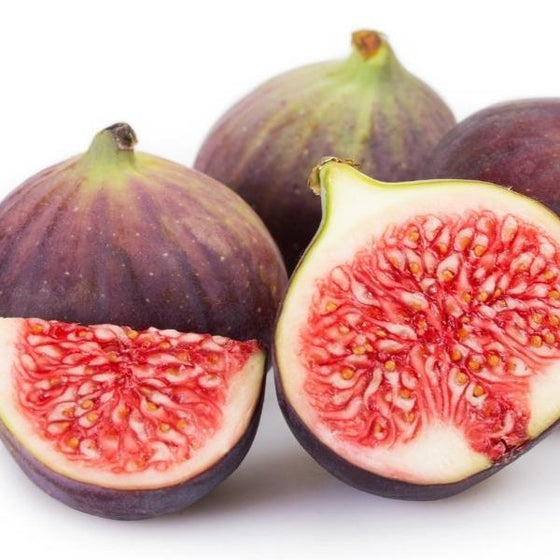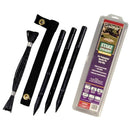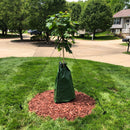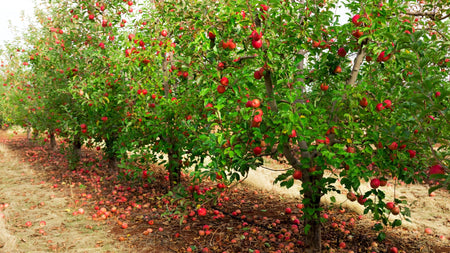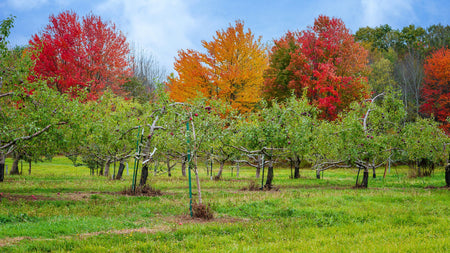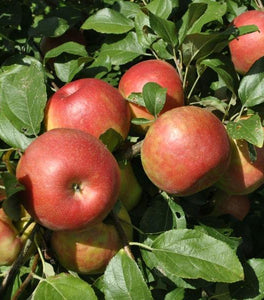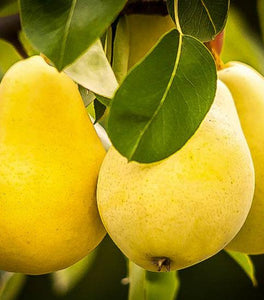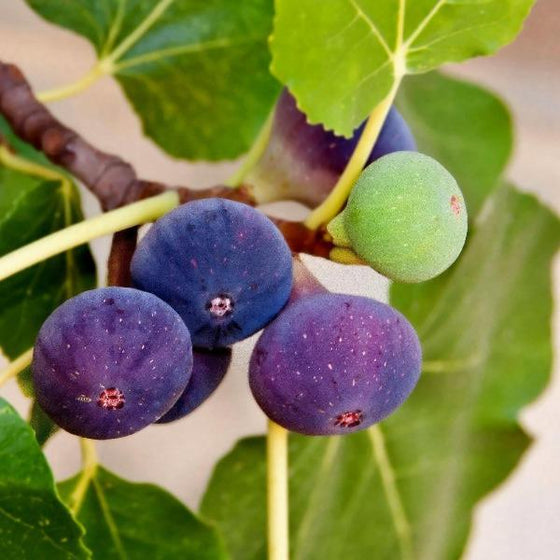
Images Depict Mature Plants
Chicago Hardy Fig Trees for Sale Online
The Chicago Hardy Fig Tree (Ficus carica 'Chicago Hardy') is a cold-hardy fruiting tree that brings the flavor of the Mediterranean to a wide range of climates, including northern regions. Known for its ability to survive in USDA Zones 5–10, this fig tree can withstand winter temperatures down to -10°F and still produce delicious fruit. The tree yields medium-sized, purplish-brown figs with sweet, rich red flesh perfect for fresh eating, drying, baking, or preserves. Its compact size—typically reaching 10–15 feet tall—makes it suitable for in-ground planting or large containers, especially in urban or small-space gardens.
Fast-growing and highly productive, the Chicago Hardy Fig Tree begins producing fruit as early as its second year and can yield two crops per season in warmer climates. This self-pollinating variety does not require a second tree to bear fruit, making it a great option for home gardeners, edible landscapes, or patio orchard collections. The attractive, lobed foliage adds a touch of tropical texture to the garden, and its low-maintenance nature makes it ideal for gardeners of all experience levels. It thrives in full sun and well-drained soil and benefits from regular watering during hot, dry spells.
Whether you're looking to add unique, flavorful fruit to your backyard or want a versatile, hardy specimen for container growing, the Chicago Hardy Fig is a smart and rewarding choice. With proper care, this fig tree will deliver a bountiful harvest of sweet, homegrown figs year after year. Its combination of cold hardiness, compact size, and delicious fruit makes it one of the most popular fig varieties for northern gardeners and fig lovers alike.
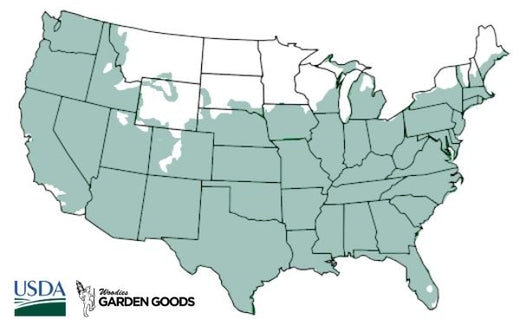
| Hardiness Zone: | 5-10 |
|---|---|
| Mature Height: | 10 to 15 Feet |
| Mature width: | 10 to 15 Feet |
| Classification: | Broad leaved deciduous tree, spring flowering |
| Sunlight: | Full sun to part shade |
| Habit: | Spreading, umbrella shaped canopy |
| Foliage: | Dark green |
| Fruit Color: | Purple, brown |
| Pruning Season: | Late winter |
| Soil Condition: | Any well drained soil |
| Water Requirement: | Water well until established |
| Uses: | One of the best fig trees for the north |
How to Care for Chicago Hardy Fig Tree
Before you plant your new Chicago Hardy Fig Tree, make sure to read the recommended care instructions to keep this plant healthy and thriving.
How Do I Plant A Chicago Hardy Fig Tree?
Planting a Chicago Hardy Fig Tree starts with choosing a sunny location that receives at least 6 to 8 hours of direct sunlight each day. This cold-hardy fig thrives in well-drained soil with a slightly acidic to neutral pH, so amend heavy clay or poor soil with compost or sand to improve drainage. Dig a hole twice as wide and as deep as the root ball, loosening the surrounding soil to encourage strong root development. Place the tree so the top of the root ball is level with the ground, backfill with amended soil, and water thoroughly to eliminate air pockets. A 2–3 inch layer of mulch around the base will help retain moisture and suppress weeds—just keep it a few inches from the trunk. If you're planting your Chicago Hardy Fig Tree in a container, select a large pot with drainage holes and use a well-draining potting mix. This method is especially helpful in colder climates where the tree can be moved indoors or into a sheltered area for winter protection. Space in-ground trees at least 8 to 10 feet apart to accommodate mature growth and airflow. Whether in a pot or planted in the ground, this fig tree will benefit from a deep watering after planting and regular moisture as it becomes established. With the right start, your Chicago Hardy Fig Tree will produce delicious, sweet figs and serve as a beautiful, edible addition to your landscape.
How Do I Water a Chicago Hardy Fig Tree?
Watering your Chicago Hardy Fig Tree correctly is essential to establishing a strong root system and ensuring consistent fruit production. In the first year after planting, water deeply 1–2 times per week, depending on rainfall and soil type, to keep the soil consistently moist but not soggy. Figs prefer well-drained soil, so always check that water isn't pooling at the base of the tree. Apply water directly at the root zone, and avoid wetting the foliage to reduce the risk of fungal issues. Adding a 2–3 inch layer of mulch will help retain soil moisture and regulate temperature, especially during hot summer months. Once established, Chicago Hardy Fig Trees are fairly drought-tolerant but will produce more and better-quality fruit with consistent moisture. During the growing season, aim to provide about 1 inch of water per week, especially during fruit development and dry spells. Container-grown fig trees will need more frequent watering, sometimes every 1–2 days in hot weather, as pots dry out quickly. Always let the top inch of soil dry slightly between waterings to prevent root rot. With a consistent watering schedule, your fig tree will thrive and reward you with an abundance of sweet, homegrown figs from midsummer into early fall.
How do I fertilize a Chicago Hardy Fig Tree?
Fertilizing your Chicago Hardy Fig Tree is essential for promoting vigorous growth and abundant fruit production. In early spring, as new leaves begin to emerge, apply a balanced, slow-release fertilizer such as 10-10-10 or 8-8-8 around the tree’s root zone, keeping it a few inches away from the trunk to avoid burn. Water thoroughly after fertilizing to help nutrients soak into the soil. For young trees, monthly feedings through early summer can support root development and healthy branching, while mature trees typically only need fertilizing once or twice a year based on overall growth and soil quality. If you're growing your Chicago Hardy Fig Tree in a container, use a water-soluble or liquid fertilizer every 4–6 weeks during the active growing season. Container trees need more frequent feeding due to limited soil and nutrient leaching from regular watering. Avoid over-fertilizing, as too much nitrogen can result in lush foliage with little fruit. Instead, focus on a balanced approach that supports both leaf and fruit development. With proper fertilization, your Chicago Hardy Fig will produce sweet, medium-sized figs throughout the growing season and thrive as a productive, ornamental feature in your garden or patio space.

How and When should I Prune my Chicago Hardy Fig Tree?
Pruning your Chicago Hardy Fig Tree is important for shaping the tree, encouraging strong growth, and maximizing fruit production. The best time to prune is in late winter or very early spring, while the tree is still dormant but after the danger of hard frost has passed. Begin by removing any dead, damaged, or crossing branches, as well as any suckers or weak shoots near the base. If your tree has grown too large or leggy, selectively trim back up to one-third of the oldest wood to promote vigorous new growth and better air circulation. During the growing season, you can also perform light pruning or pinching to manage size and encourage branching. For container-grown trees, more frequent light pruning helps maintain a compact shape. Be cautious not to over-prune, especially if the tree experienced winter dieback, as new figs form on the current year’s growth. With a consistent annual pruning routine, your Chicago Hardy Fig Tree will maintain a manageable size, remain healthy, and produce abundant crops of sweet, medium-sized figs year after year, making it a valuable addition to any edible garden or home orchard.

